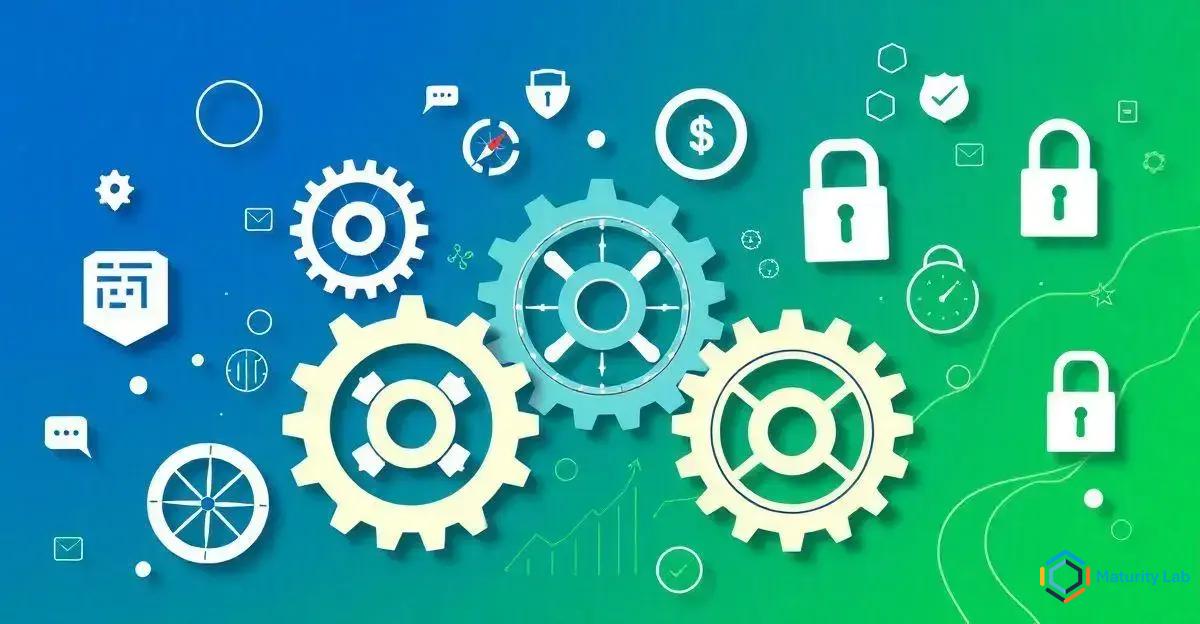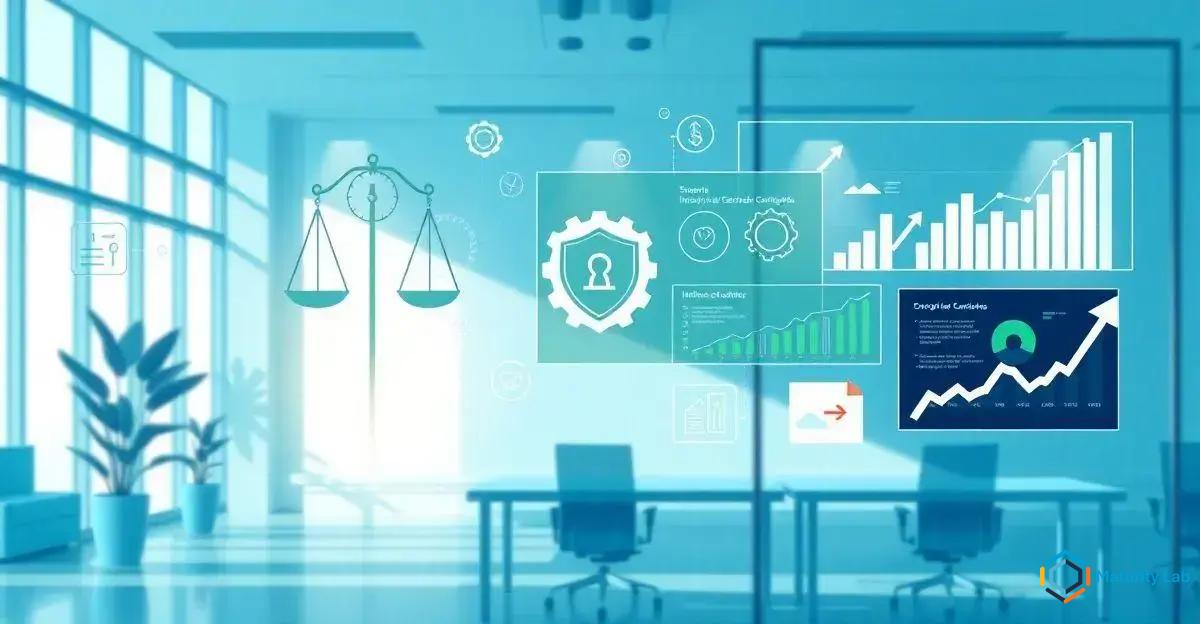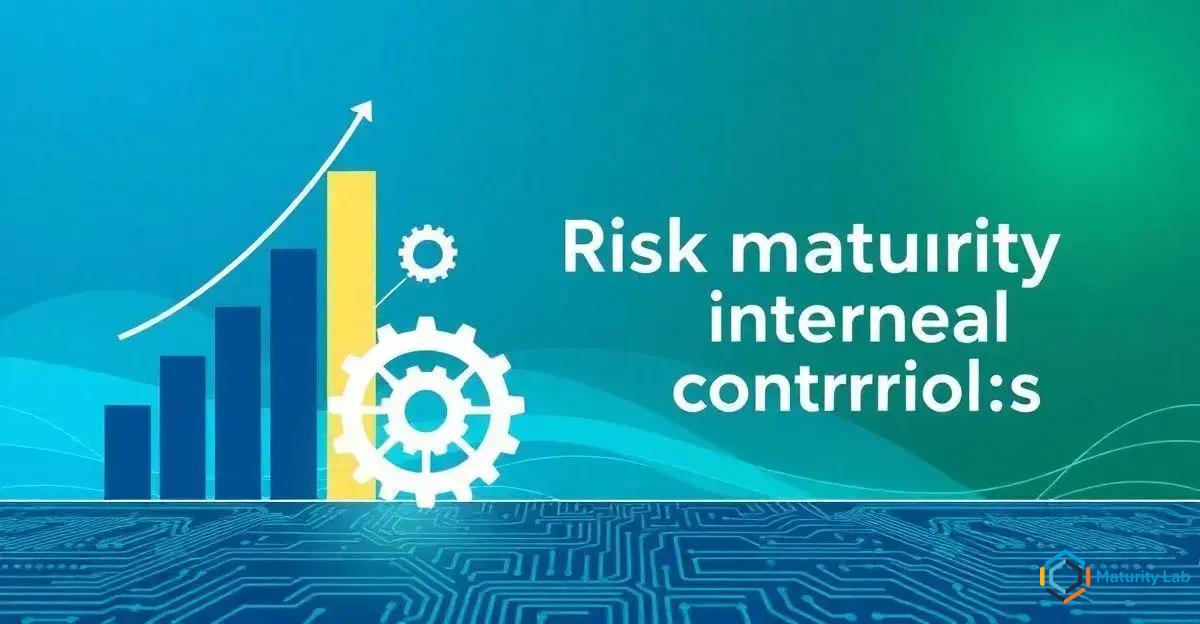The Risk Maturity Model (RMMM) provides a structured approach for organizations to evaluate and improve their risk management capabilities, moving from reactive to proactive strategies. By establishing robust internal controls that align with RMMM, businesses can enhance the integrity of financial reporting, ensure regulatory compliance, and improve operational efficiency. Key components of these internal controls include the control environment, risk assessment, control activities, information and communication, and monitoring, all of which contribute to a culture of continuous improvement and resilience against uncertainties.
In today’s dynamic business environment, managing risks effectively is paramount. The Risk Maturity Model (RMMM) serves as a comprehensive framework to evaluate and enhance an organization’s risk management capabilities. By understanding and implementing RMMM, businesses can significantly improve their internal controls, ensuring a robust defense against potential threats. This article delves into the intricacies of RMMM and provides actionable insights on fortifying internal controls to achieve higher risk maturity levels.
Understanding the Risk Maturity Model (RMMM)

The Risk Maturity Model (RMMM) is a structured framework designed to assess and enhance an organization’s risk management capabilities.
It provides a systematic approach to evaluate the maturity of risk management processes, identifying strengths and areas for improvement.
RMMM is instrumental in helping organizations transition from reactive to proactive risk management practices.
RMMM is typically divided into several maturity levels, each representing a different stage of risk management sophistication.
These levels range from initial, where risk management is ad hoc and unstructured, to optimized, where risk management is fully integrated into the organization’s culture and operations.
By progressing through these levels, organizations can develop a more comprehensive and effective risk management strategy.
One of the key benefits of RMMM is its ability to provide a clear roadmap for improvement.
Organizations can use the model to benchmark their current risk management practices against best practices and industry standards.
This benchmarking process helps identify gaps and prioritize areas for development, ensuring that resources are allocated effectively.
Moreover, RMMM emphasizes the importance of continuous improvement.
Risk management is not a one-time activity but an ongoing process that requires regular review and adaptation.
By adopting RMMM, organizations commit to a cycle of continuous assessment and enhancement, fostering a culture of proactive risk management.
Practical examples of RMMM application include conducting regular risk assessments, implementing risk mitigation strategies, and establishing a risk-aware culture within the organization.
For instance, a company might use RMMM to evaluate its current risk assessment procedures, identify weaknesses, and implement more robust risk identification and mitigation techniques.
Reflecting on your organization’s current risk management practices, how mature are they?
Are there areas where improvements can be made?
Wouldn’t it be more efficient to implement a structured framework like RMMM to guide your risk management efforts?
By leveraging RMMM, organizations can not only enhance their risk management capabilities but also build resilience against future uncertainties.
Implementing Effective Internal Controls

Implementing effective internal controls is a critical component of achieving higher risk maturity levels within an organization. Internal controls are processes and procedures designed to ensure the integrity of financial reporting, compliance with laws and regulations, and the efficient and effective operation of the business. When aligned with the Risk Maturity Model (RMMM), these controls can significantly enhance an organization’s risk management framework.
Effective internal controls typically encompass several key elements: control environment, risk assessment, control activities, information and communication, and monitoring. The control environment sets the tone for the organization, influencing the control consciousness of its people. It includes the governance and management functions, as well as the attitudes, awareness, and actions of those charged with governance and management regarding internal controls and their importance.
Risk assessment involves identifying and analyzing risks that could prevent the organization from achieving its objectives. This process helps in determining how risks should be managed. Control activities are the actions established through policies and procedures that help ensure that management’s directives to mitigate risks are carried out. These activities occur throughout the organization, at all levels and in all functions.
Information and Communication
Information and communication are vital for internal controls to function effectively. Relevant information must be identified, captured, and communicated in a form and timeframe that enable people to carry out their responsibilities. Effective communication also occurs in a broader sense, flowing down, across, and up the organization.
Monitoring is the process that assesses the quality of internal control performance over time. This can be accomplished through ongoing monitoring activities, separate evaluations, or a combination of both. Ongoing monitoring occurs in the course of operations and includes regular management and supervisory activities.
For example, a company might implement internal controls by establishing a robust approval process for financial transactions, conducting regular audits, and ensuring that employees are trained on compliance and ethical standards. These measures not only safeguard the company’s assets but also promote operational efficiency and adherence to policies.
Reflect on your organization’s current internal controls. Are they comprehensive and effective? Do they align with the principles of RMMM? By implementing and continuously improving internal controls, organizations can achieve a higher level of risk maturity, ultimately leading to greater resilience and success in the face of uncertainties.
In conclusion, the Risk Maturity Model (RMMM) and the implementation of effective internal controls are pivotal in enhancing an organization’s risk management capabilities.
By adopting RMMM, organizations can systematically evaluate and improve their risk management processes, transitioning from reactive to proactive practices.
This structured approach not only identifies strengths and areas for improvement but also provides a clear roadmap for continuous enhancement.
Effective internal controls, when aligned with RMMM, further fortify an organization’s risk management framework.
These controls ensure the integrity of financial reporting, compliance with laws and regulations, and the efficient operation of the business.
By focusing on key elements such as control environment, risk assessment, control activities, information and communication, and monitoring, organizations can create a robust internal control system that supports higher risk maturity levels.
The integration of RMMM and internal controls fosters a culture of proactive risk management and continuous improvement.
Organizations committed to this approach are better equipped to navigate uncertainties and build resilience against potential threats.
Reflecting on your organization’s current practices, consider the benefits of adopting RMMM and strengthening internal controls.
Wouldn’t it be more efficient to implement a structured framework to guide your risk management efforts?
By doing so, you can achieve greater operational efficiency, compliance, and overall success in today’s dynamic business environment.
Frequently Asked Questions about RMMM and Internal Controls
What is the Risk Maturity Model (RMMM)?
The Risk Maturity Model (RMMM) is a structured framework designed to assess and enhance an organization’s risk management capabilities, helping businesses transition from reactive to proactive risk management practices.
How does RMMM benefit an organization?
RMMM provides a clear roadmap for improvement by benchmarking current risk management practices against best practices and industry standards, identifying gaps, and prioritizing areas for development.
What are the key elements of effective internal controls?
Effective internal controls encompass the control environment, risk assessment, control activities, information and communication, and monitoring. These elements ensure the integrity of financial reporting, compliance, and operational efficiency.
How do internal controls align with RMMM?
Internal controls, when aligned with RMMM, enhance an organization’s risk management framework by ensuring comprehensive and effective processes that support higher risk maturity levels.
Can you provide an example of implementing internal controls?
A company might implement internal controls by establishing a robust approval process for financial transactions, conducting regular audits, and ensuring employees are trained on compliance and ethical standards.
Why is continuous improvement important in risk management?
Continuous improvement is crucial because risk management is an ongoing process that requires regular review and adaptation. Adopting RMMM fosters a culture of proactive risk management and continuous enhancement.

